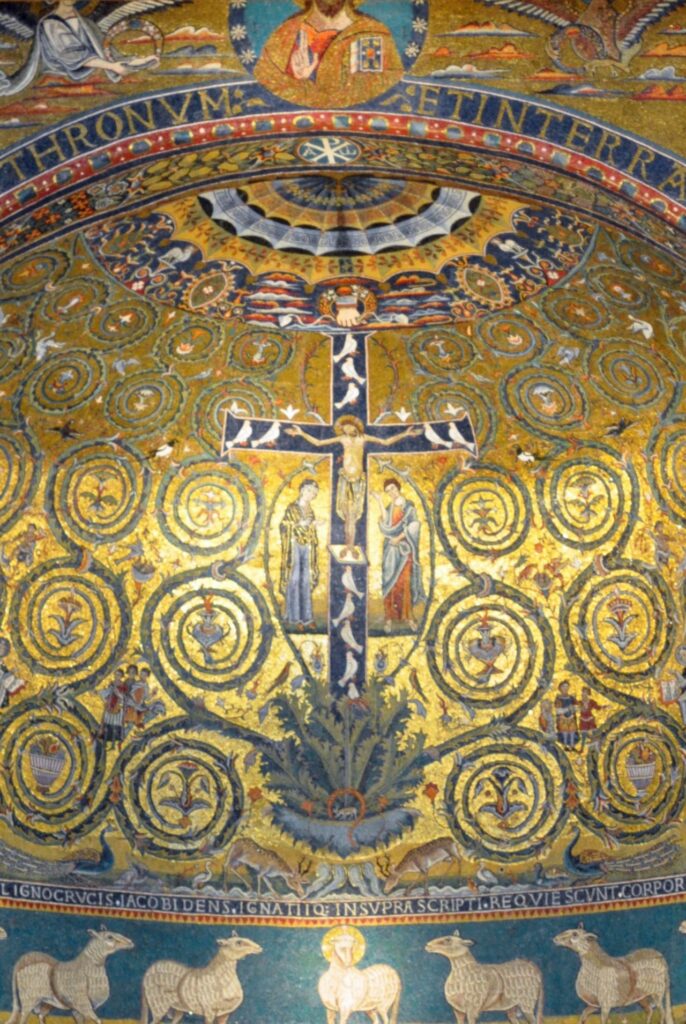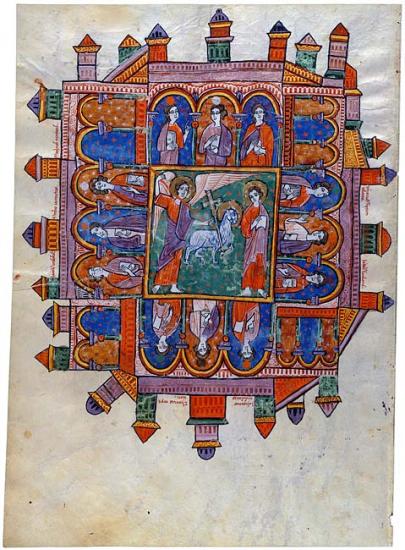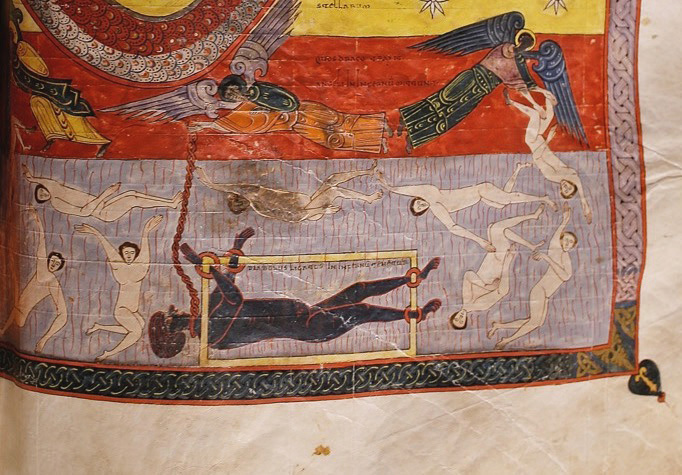
The cross is decorated with white doves, taken to represent the Apostles who will soon fly to all corners of the world carrying the message of Christ’s victory (Psalm 19:4; Acts 1:8).
At the foot of the Cross four rivers flow out (Genesis 2:10) and two deer drink deeply of the river of the water of life (Ezekiel 47:1-12; Revelation 22:1-2); the deer that yearns for running streams (Psalm 42:1-3) quenches its thirst at the fountain of living water that is Christ (Zechariah 12:10; 13:1; John 4:10; 7:37-39; 19:33-37).
Blessed are those who wash their robes, so as to have the right of the tree of life, and may enter the city by the gates. Outside are the dogs, sorcerers, and fornicators, the murderers and idolators, and all who love and practice deceit. (Apocalypse 22:14-15)
This epilogue of the Apocalypse summarizes the message of the book: Christ is coming soon to judge the world and vindicate his saints. The text concludes with the usual threats against anyone who would tamper with the book as the seer has written or dictated it.
Those who wash their robes (in the blood of the lamb) and have access to the tree of life are the faithful members of the Church. They remain faithful despite the persecution described throughout the Apocalypse. The “tree of life” is both a reference to the Cross and Christ himself who transformed the Cross into the antidote for the Tree of Knowledge by which Adam and Eve sinned in Eden. Blood, which typically stains clothing, here washes clothing clean; in the Old Testament, blood both purifies (the sacrifices in the Temple, especially the Day of Atonement) and makes those who touch it unclean.
The list of those “outside the gates” of the New Jerusalem are an interesting summary of all those who personify opposition to God. “Dogs” were a common nickname for the priests of the Cybele, the “great mother” goddess; these “dogs” would castrate themselves in a fit of ecstasy and then wander the streets in groups, singing and praying and asking for alms. In many ways, they sound like the first century equivalent of the Hare Krishna groups that were so common in the 1970s (except the self-castration, of course).
Sorcerers practiced “magic,” which was the usual way to describe illicit religious practices. “Fornicators” practiced porneia (lit. “dirty living”), which included fornication but also could mean a wide variety of other behavior or activities, not all of which we would consider sexual. But it was a quick and easy way to refer to those who misbehaved sexually. Murderers and idolators clearly misapprehended the image of God inherent in each human person. All those who love or practice deceit? That sums up all evil-doing nicely, doesn’t it?
The world is neatly divided into those who have washed their robes vs. those who love and practice deceit. If only life situations and predicaments pre-apocalypse could be so clearly and easily identified!


